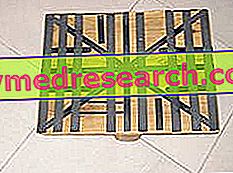By Dr. Davide Sganzerla
Proprioceptive training is a practice based on stimulation of the neuro-motor system in its entirety. The proprioceptive training is composed of a set of exercises that create situations of instability, in order to evaluate and improve the use of proprioceptive signals coming from the peripheral parts of the body, in particular from the lower limbs.
The primary objective of proprioceptive training is to re-educate the proprioceptive reflexes, in order to obtain again an optimal control of the posture and of the joints involved.
The proprioceptive training is of fundamental importance to obtain a complete recovery after a trauma (to restore the reflexes and reactivate all the information channels interrupted by the injury); in the prevention of injuries (to have a more rapid control of the muscles during the game actions and to encourage the solicitation of whole muscle groups avoiding isolated contractions); in sports training (to have a great sense of balance and absolute control of the technical gesture)
The proprioceptive training must be carried out by all athletes who practice a sporting activity characterized by a large number of jumps and changes of direction, where the percentage of sprains in the ankle and knees is high, and where physical fatigue appears in important way (football, basketball, tennis, volleyball, rugby, handball etc.).
The proprioceptive training must be set on situations that cause the athlete to lose his balance, then to activate the muscles quickly and correctly to recover it as quickly as possible. The balance is improved by maintaining the position together with the ability to quickly correct imbalances.
To reach the goal of a correct stimulation of proprioceptive reflexes it is necessary that the athlete is involved, motivated and that he becomes the protagonist of his own improvement.
The training technique is based on controlled and applied stresses on the joints, using both unloading and natural loading exercises, resting on the ground or on oscillating planes of varying difficulty, such as tablets, bouncers, skymmi, bosu, trampolines and many others .
All proprioceptive exercises must be proposed without wearing shoes, so as not to distract proprioceptive sensations from the shoe. To further intensify the training it is possible to perform the exercises with the eyes closed, as the balance is also controlled by the exteroceptores (sight and vestibular apparatus), which receive information from the external world and which together with the proprioceptors, give the exact information on the body position. The exercises with closed eyes are used to disturb the information systems of the balance, and force the athlete to be more sensitive to the other channels of information that remained active. Finally, to make proprioceptive training even more difficult, it is possible to create paths with many tablets, platforms and unstable grounds, where you can walk, run, jump and perform technical gestures related to your sport.
Proprioceptive platforms
In proprioceptive training the tools that are mostly used are:
 |  |
| Rectangular wooden table | Round wooden board |
 |  |
| Skimmy rubber disk | Trampoline |
 |  |
| Ball | Tennis ball |
 |  |
| Airex | Bosu |
 |  |
| Temix | Resizer |
 |  |
| Tool Ball | fitball |



